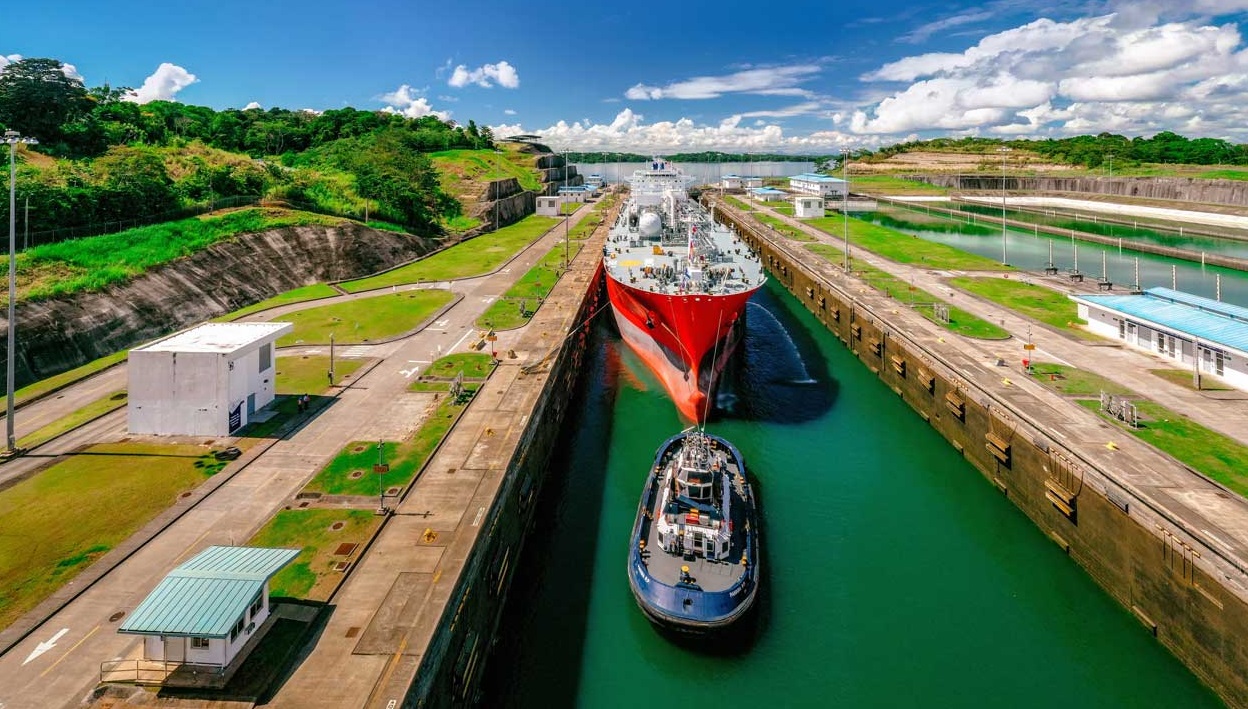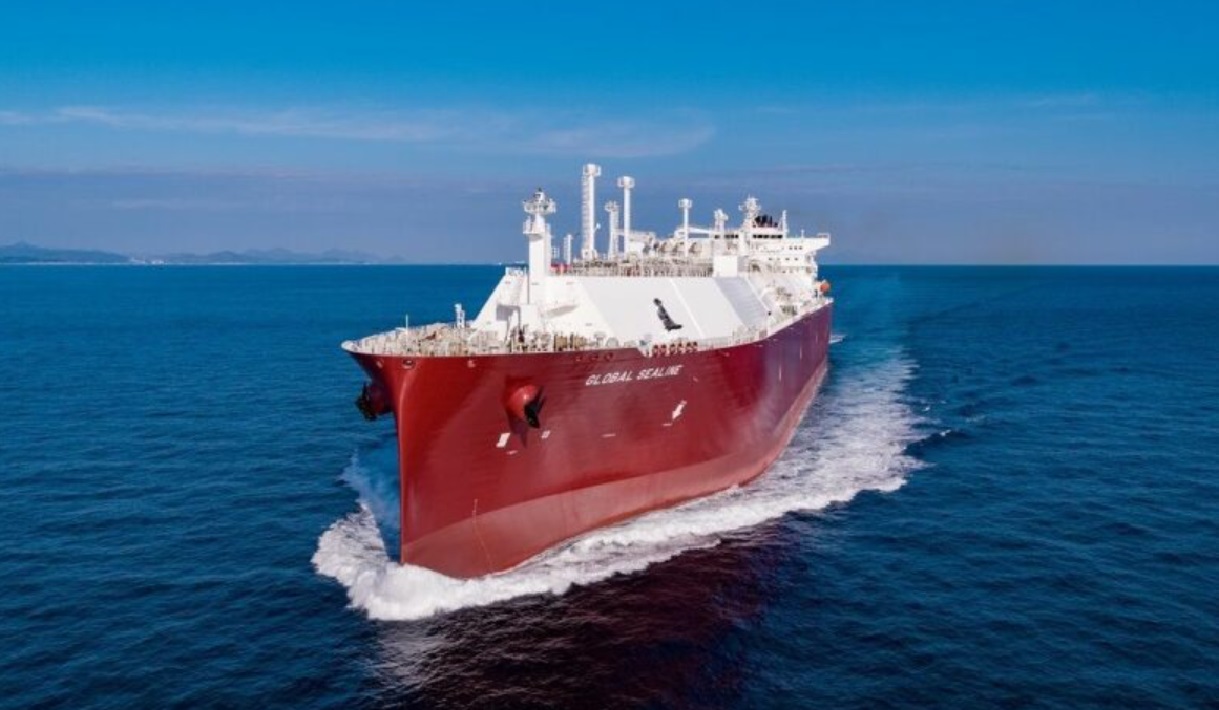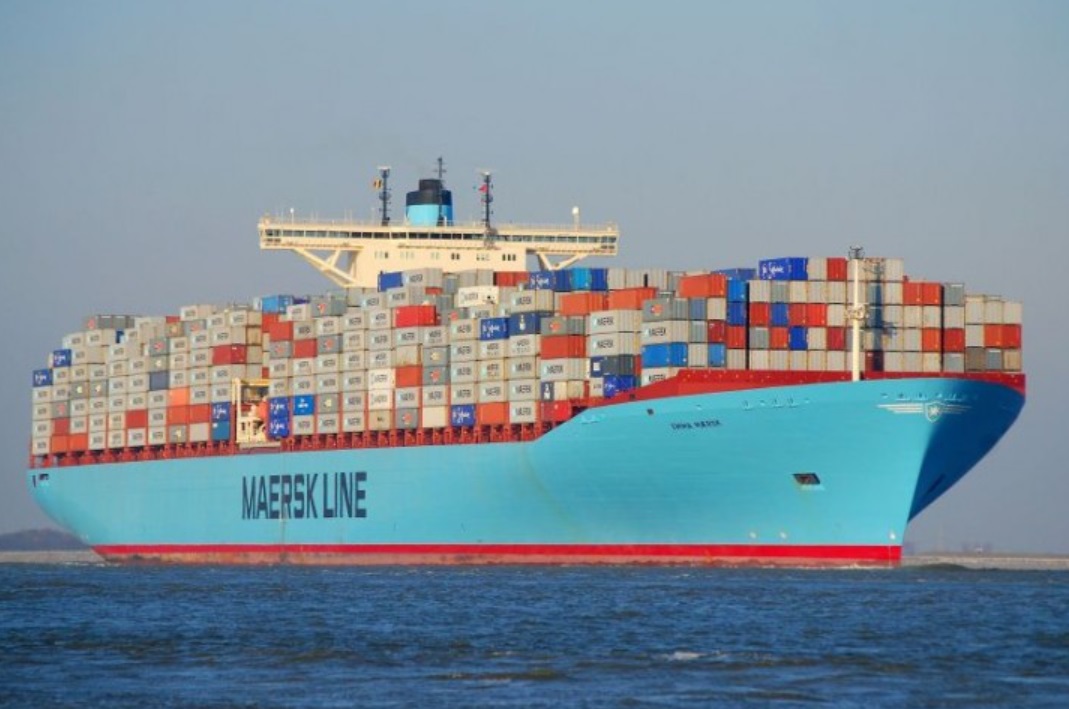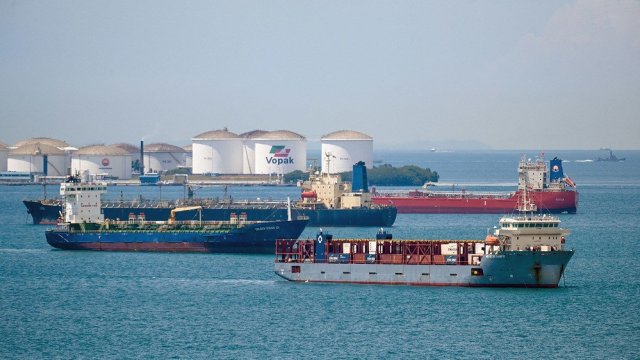The remains of a submerged forest tell how bad things are in the drought-stricken Panama Canal Zone. A few hundred meters from the massive ships carrying goods around the world, tree stumps rise above the water line. They are all that remains of a forest that was flooded more than a century ago to create the canal. It is not unusual for these stumps to be above water in the height of the dry season, but now, just after the rainy season, they must be completely submerged.
The remains of the forest are a visible reminder of how dry conditions have crippled a waterway that handles $270 billion a year in global trade. And there are no easy solutions. The Panama Canal Authority is weighing potential solutions that include an artificial lake to pump water into the canal and various methods to increase rainfall, but both options will take years to implement, if at all.
With the water level at 1.80 meters below normal, canal authorities have restricted the number of vessels that can pass. The restrictions imposed late last year were the strictest since 1989 when the canal was closed after the US invaded Panama to oust its de facto ruler Manuel Noriega. Some shippers are paying millions of dollars to clear the growing backlog, while others are taking longer and more expensive routes around Africa or South America.
Restrictions were eased slightly due to a wetter-than-expected November, but at 24 vessels per day, the maximum is still well below the pre-drought daily capacity of around 38 vessels. As the dry season lingers, congestion around the canal is expected to worsen again.
“As a canal, as a country, we have to take some action because this is not acceptable”, said Eric Cordoba, manager of the canal authority’s water department. “We need to recalibrate the system”, adds he.
The canal’s difficulties reflect how climate change is altering global trade flows. Last year, drought created difficulties along the Mississippi River in the US and the Rhine in Europe. In the UK, rising sea levels increase the risk of flooding on the Thames. Melting ice creates new sea routes in the Arctic.
Under normal circumstances, the Panama Canal handles about 3% of global maritime trade volumes and 46% of containers moving from Northeast Asia to the US East Coast. The canal is Panama’s biggest source of revenue, with revenues expected to reach 4.3 billion USD in 2022. To allow the passage of 24 ships a day during the dry season, the canal will release water from Lake Alajuela, a secondary reservoir for the facility. If the rains begin to increase in May, the canal could begin to increase traffic, Eric Cordoba believes.
However, these are short-term solutions. In the long term, the main solution to the chronic water shortage will be to dam the Indio River and then tunnel through a mountain to bring fresh water from Gatun Lake, the main water source for the canal. The project, along with additional conservation measures, will cost about 2 billion USD, Córdoba estimates. He says it will take at least six years to build a dam and fill it. The US Army Corps of Engineers is conducting a feasibility study for the project.
Damming the Indio River will increase ship traffic by 11 to 15 a day, enough to keep Panama’s biggest source of money operating at full capacity while ensuring fresh water for Panama City, where developers have erected a replica of Miami of glittering skyscrapers over the past two decades. The country will need to dam even more rivers to ensure water by the end of the century.
All of these projects will need the approval of Congress. Meanwhile, the thousands of farmers and ranchers whose lands will be flooded to build the future dam are already organizing to oppose it.
This is not the first time Panamanians have united to push back against a major infrastructure initiative. Protesters regularly blocked roads last year after the government moved to protect operations at First Quantum Minerals Ltd.’s $10 billion copper mine. Authorities have since said they will close the mine, a project many consider an environmental disaster.
Elizabeth Delgado, 38, lives in the last house on the road to the Indio River. Her property will be among the first to be flooded if the dam is built. During big storms, Indio rises enough to come within a few meters of her unpainted wooden home, where her family lives off the rice, plantains and cassava they grow. She has no intention of moving.
“How are we going to survive somewhere else where we don’t know what to do?”, said Elizabeth Delgado. “They told us we would have to leave, but we plan to stay here on our land”, she adds.
The other potential solution is decidedly more experimental. In November, a small plane operated by Weather Modification Inc., based in North Dakota, arrived in Panama to test cloud “seeding”, a process of implanting large salt particles in clouds to increase the condensation that creates rain. However, the method is used successfully mostly in dry climates, not in tropical countries like Panama.
Some shippers expressed frustration that the canal authority did not act more quickly to deal with the low water levels.
“Panama has not undertaken significant infrastructure projects to increase freshwater supplies”, wrote Jeremy Nixon, chief executive of Japanese container shipping company Ocean Network Express Holdings Ltd, or ONE, in a letter to Panama’s President Laurentino Cortizo Cohen “We sincerely hope that some urgent action will be taken”, the letter added.
Panama’s presidential palace did not respond to a request for comment on the letter.
A combination of climate change and infrastructure expansion are at the heart of the canal’s problems. The canal authority completed a new set of locks in 2016 to increase traffic and keep up with the growing size of cargo ships. What he didn’t do was build a new dam to pump out enough water. Then the land hit. November 2023 was the driest year on record for Barro Colorado Island in Gatun Lake, according to Steve Payton, director of the Physical Monitoring Program at the Smithsonian Tropical Research Institute.
Global warming is intensifying the weather phenomenon known as El Niño, which has brought drought to Panama. The impact of the phenomenon will continue at least through March in the Northern Hemisphere. Lake Gatun drains faster during severe dry seasons, and rising temperatures accelerate evaporation.
Last year was “completely different from the others”, said Gabriel Aleman, head of the Panama Canal Pilots Association. He has been running ships through the canal for more than 30 years and he says the dry season has not peaked at all.
In 2023, the trade winds never fully strengthened, contributing to record water temperatures off Panama’s Pacific and Atlantic coasts. Light winds also mean that rain clouds do not reach Gatun. On many days, rain pours down on Panama City while the lake receives only a few drops.
The crisis set back available sea routes by more than a century. When it began operating in 1914, the canal provided an alternative to the Suez Canal, the Cape of Good Hope and the Strait of Magellan for shipping goods between the Northern and Southern Hemispheres. Suppliers are now returning to all three options to overcome the bottleneck in Panama, although ships have also recently diverted from Suez to avoid attacks by Yemen’s Houthi rebels. While the Suez Canal is a sea-level canal, the Panama Canal is a freshwater canal relying on man-made lakes, making it vulnerable to drought.
Jorge Luis Quijano, a consultant and former head of the Canal Administration, says it could take a year for normal volumes to return. Quijano says he foresaw the problem a decade ago when he oversaw the addition of a new set of airlocks to accommodate larger vessels at the facility. The sluice gates are engineering marvels, but they are also gluttons for water.
Salt water mixes with fresh water as the canal locks fill up. To prevent the salinization of the country’s largest source of drinking water, Lake Gatun, the canal releases enough lake water to fill 76 Olympic-sized swimming pools with each vessel. Giant basins inject some of that water back into the lake, but because that process increases salinity, it can only be used to a limited extent, Quijano says. Before his term expired, he lobbied the government to start building an additional dam, but to no avail.
While authorities look for permanent solutions, local residents are feeling the effects of the prolonged drought. Raquel Luna, 70, has lived on the shores of Lake Gatun since she was 16 years old. Five of her six grown children live nearby.
Most years, she charges visitors 1 USD per person to park in her shady lakefront spot. A row of palm trees is commonly used to tie boats. But now they are 10 meters from the water line. Visitors have to scramble over rocks and mud to reach the water. “Now it hardly welcomes visitors. No one will come”, she says. “They like it when the water level is high”, adds Luna.








